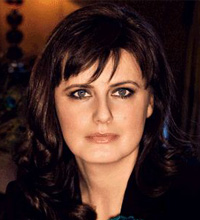The Dog and the Relationship Theory by Richard
This week The Practitioner features a story with a surprise ending. Thanks to Lenka Beinhoff for “The Dog and the Relationship Theory by Richard.”
In some families, children are celebrated and seen as precious gifts on earth, while in others, they have no voice or rights. Having no chance to talk or express their own feelings, these children are not able to develop healthy emotions. Such adult children often struggle in their emotional world and tend to live unhappy lives.
My client Richard leads a different life. He has his voice and makes use of it every day. But this has not always been the case. Having a sister who is three years older, Richard was in her shadow, and he often enjoyed it. She is a great and strong communicator, so he used her as his spokeswoman at home. When she left for China as part of her institution’s student exchange program, she took her shadow with her and left Richard standing in the spotlight of the family. He had to learn to use his voice more strongly and started thinking more about life, family and relationships. It was the first time in his life that he felt pain for not having a close family member by his side for the next four months.
The first day after his sister left proved to be the worst day of his life. Through his pain, Richard realised that their sibling relationship was so strong that he never thought about it before. He started feeling the appreciation of having a sister who could always help and had time to talk to him, giving him valuable advice as an older teenager. But, for now, he knew that he had to take his life into his own hands. He moved into his sister’s room and started following her example. After four weeks, he made a quantum jump, a tremendous development, when he got elected as the spokesman of his class.
He was very proud of himself. He started taking on tasks he now felt more comfortable with, showing a little more responsibility even in the household. His mother’s supervisory eyes were following this change very closely. She had always assigned certain tasks to both children to shape their behaviour and to strengthen their personal character, helping them to acquire important life skills that pay dividends later in their lives. Learning to deal with frustration was one part of this family game.
One Sunday, Richard got an idea, sat down in the kitchen, took pen to paper and wrote the title: The Relationship Theory. Richard is not an FFI member, neither is he a family advisor nor a psychologist. Richard is a 13-year-old who loves soccer more than anything else. In developing his theory, he started by drawing a circle in the middle of the paper which represented himself. Then he drew strings in all directions out of his circle representing his bonds with all close family members and putting one circle for each member in his nuclear family.
He drew another set of circles for his father’s family and his mother’s family and referred to both the groups as “international families — father or mother” that live in different European countries. He explained that each string had a different thickness, and the degree of the bond depended on the thickness of how good or bad the relationship to a particular person or a group of people was.
The thickest string connected Richard to the family’s dog. Surprise? Not in this case. Richard apologised to his mother, saying that it was just a coincidence that the dog’s string was a little thicker than the strings connecting him to his mother or father. But his mother was well aware of the roles that animals play in our lives—as open sources of unconditional love, as our buddies, especially during the challenging teenage years. After all, she had had a dog herself growing up, and the existence of their family dog today was no mere coincidence.
Richard was seven when the dog arrived, and he was so happy about the dog that he was often found in his bed, identifying the dog as his brother. He loves his sister, but his relationship with the dog is of another quality. Sometimes, they lay on the floor looking into each other’s eyes, showing a deep soul connection. (How life-important certain bonds between children and animals can become was demonstrated in a case[1] where a grandmother got so jealous about her grandchild’s pet that she poisoned it. The grandchild never spoke again to his grandmother.)
Just one week after bringing the dog home, the dog was fully integrated in the family and became part of the father’s jogging program and the mother’s daily tasks. However, the mother knew that taking care of a dog is good training for the next generation to learn empathy and compassion, adding value to the household and taking responsibility for another’s life. She started delegating this daily task to both the children. The children were not only helping their parents reduce their daily overload, but learning to handle frustration and to negotiate between themselves as siblings (ranging from conflict escalation to complete sibling harmony). The result was a clear set of preferences for sharing the household work: leaving Richard to walk the dog and his sister in the household. In case of any emergency, their roles were reversed without any conflict but with full understanding, showing respect for each other’s contributions.
As in any family, relationships can be very difficult and there are thicker or thinner strings. This small test with your children, other family members or with your clients can reveal the areas where a string may have the hidden potential to break. It serves as a family relationship diagnostic tool when you can still intervene before it is too late. It mostly reveals what you already know, but drawing a picture can bring more clarity to the surface – even though the truth can hurt. Help your clients give your family members more voice and provide your professional support to promote healthy emotional development. You can use these pictures later in a discussion, which can be very helpful, without having people feel offended.
Often in life, we see a solution before we see the right path leading toward it. Our task then becomes identifying this path throughout a universe of possibilities. And when we express a deep desire to make our strings thicker, then we will find the right way.
Some children can heal the world just by being born. Richard could become an inspiring FFI-member in the future, following his mother, (myself!), and helping families develop their relationships into higher levels.
[1] Aubrey H. Fine; Handbook on Animal-Assisted Therapy, 2010.
About the contributors
 Lenka Beinhoff, ACFBA ACFWA, TEP, Richard’s mother, is the founder and CEO of Beinhoff & Co. AG, a Swiss family office, specializing in helping clients design family wealth and family business solutions. Lenka can be reached at beinhoff@beinhoff.com.
Lenka Beinhoff, ACFBA ACFWA, TEP, Richard’s mother, is the founder and CEO of Beinhoff & Co. AG, a Swiss family office, specializing in helping clients design family wealth and family business solutions. Lenka can be reached at beinhoff@beinhoff.com.




